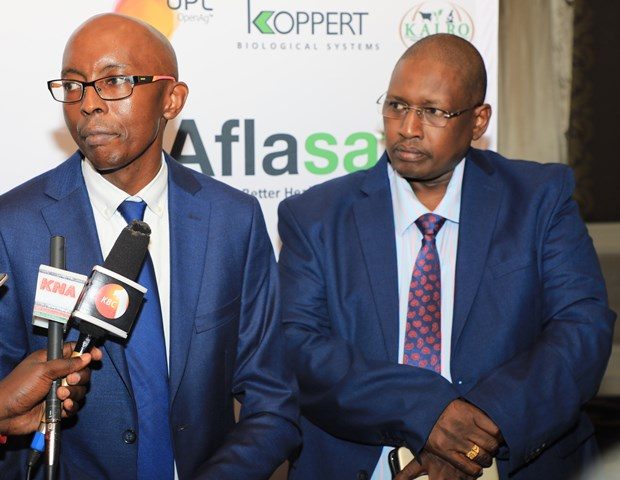The Kenya Agricultural and Livestock Research Organization (KALRO) has developed two maize varieties that will help contain the spread of the Maize Lethal Necrosis (MLN) disease and fall army worm which have adversely affected maize production in the country.
The research organization has developed the varieties that are said to be resistant to the disease and the pest with the new breeds expected in the market by April next year.
The KALRO Director-General, Dr. Eliud Kireger regretted that the viral disease and pest had adversely affected maize production in the country, adding that the menace will be a thing of the past once the new maize varieties hit the market.
“KALRO has developed the two maize varieties that are resistant to MLN disease and fall army worms to help solve the perennial problem that has for long faced maize farmers,” he said.
Speaking at KALRO farm in Naivasha on Monday, Kireger said that they had passed over the new varieties to private companies for multiplication before availing them to farmers, a move he said will help address food insecurity in the country.
On tomato, the DG said the biggest challenge that has been facing tomato farmers is the Tuta absoluta pest which he attributed to climate change adding that KALRO had developed good agriculture practices to manage the pest.
Dr. Kireger added that the research institution was keen to introduce neglected indigenous fruits to farmers as part of addressing the country’s nutrition needs and explained that KALRO under a World Bank (WB) project had embarked on mass production of the indigenous fruits’ seedlings.
He said the institution has already released 781,000 seedlings of tomatoes and neglected indigenous fruits seedlings to farmers across the country and more were underway.
Last week the organization introduced the Kenya Agricultural Observation Platform (KAOP) app which will forecast seven-day weather for individual farms.
The Director of ICT in KALRO, Boniface Akuku said for years farmers had relied on chance and luck in their farming, adding that the new digital technology will provide real time information on the rain and pest patterns to farmers.
Akuku further said that KAOP was 95 percent accurate, adding that it had the capability of forecasting weather for a 9km radius.
By Esther Mwangi




